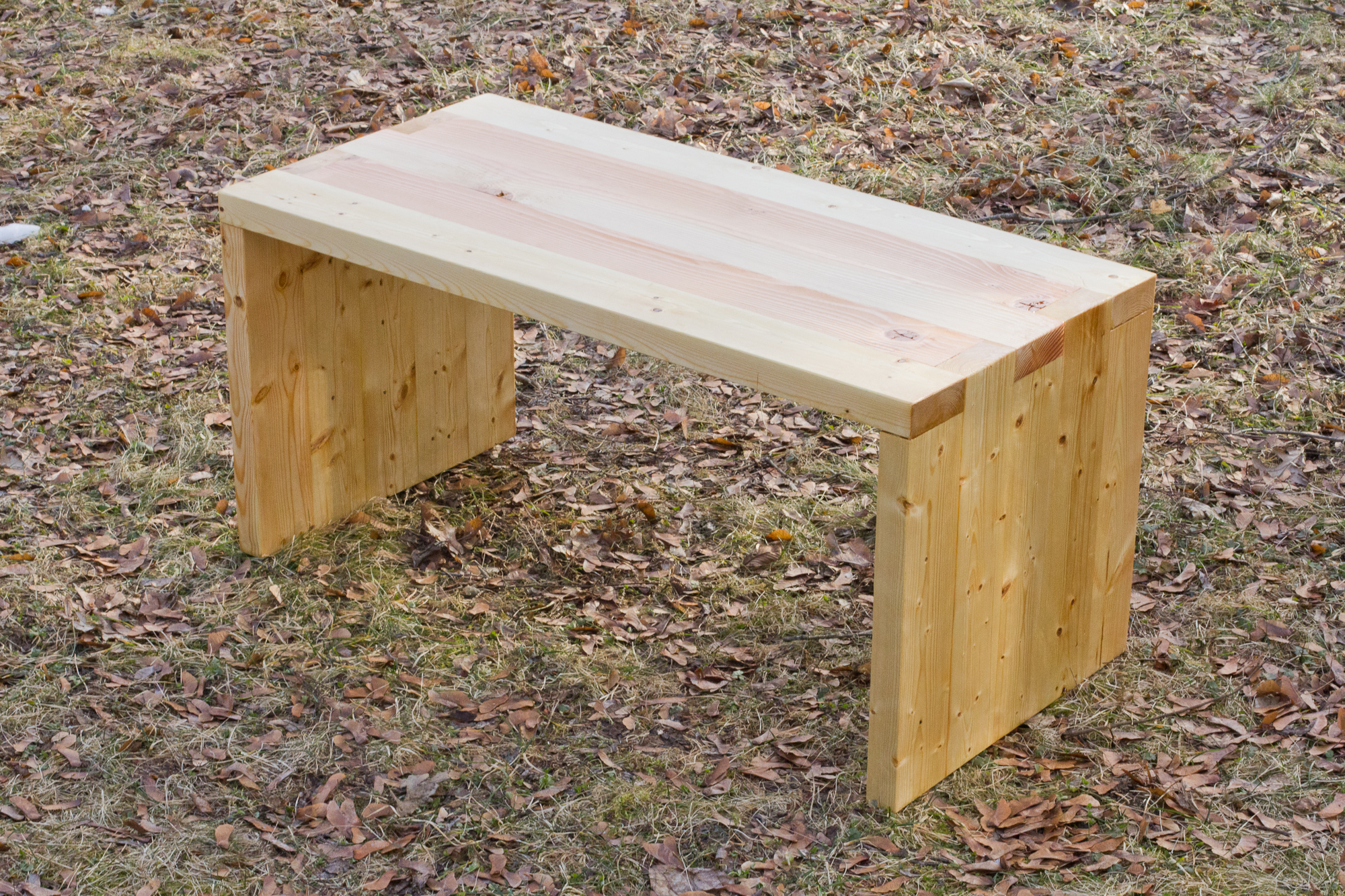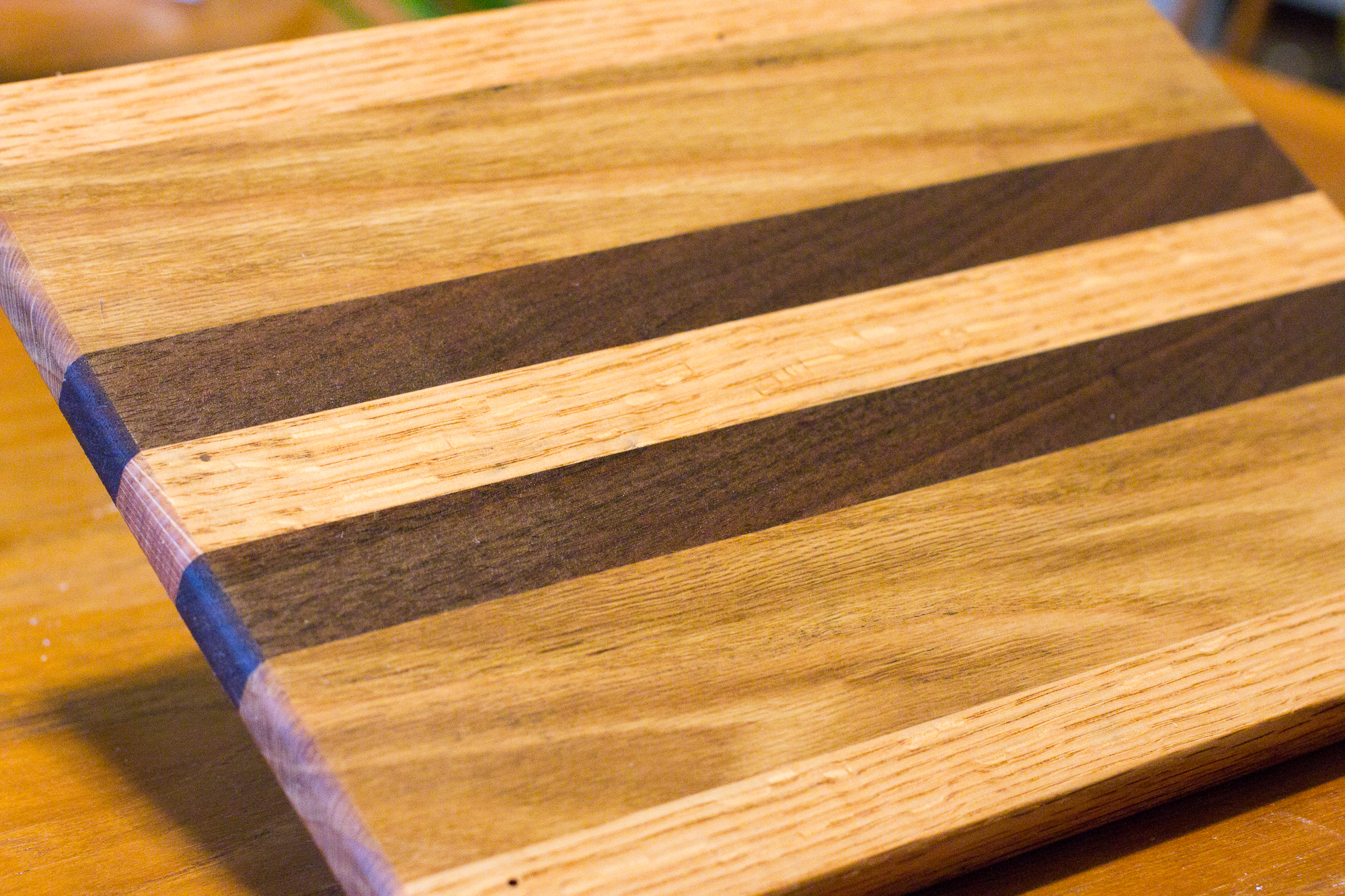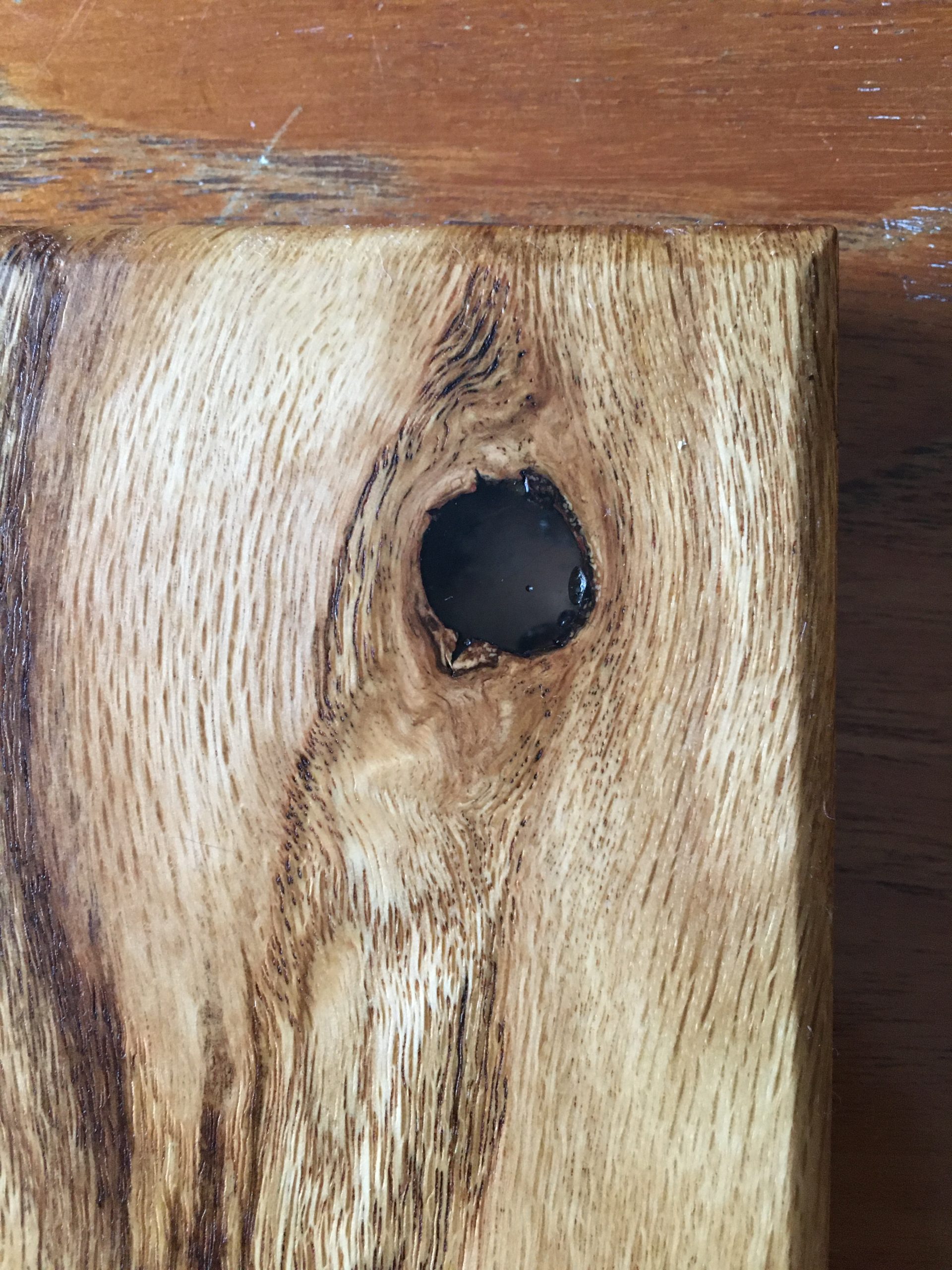Category: woodworking
-
Vinyl Record “Now Playing” Shelf
Finally tackled this project to make an record shelf for our currently playing record! We’ve needed one for a while and I couldn’t stomach buying one when I knew it’d be an easy project. Thanks to my wife for being so patient. Shelf is made from a single oak board and finished with paste wax…
-
Display Case for Science Bee
My wife does craft shows as the Science Bee and she needed a larger display case for her table. This absolute unit is two 2’x4’ pegbaord panels on a hinge: Here it is closed up. You can see the handles on the top that make moving it around much easier: And here it is in…
-
Dice Tower
This year my podcast, Roll for Topic, held its first convention. For one of the door prizes I made a dice tower reusing some ash flooring that a friend had gifted me. Here’s the finished piece: I’m very happy with out it turned out. The brass discs on the outside are for the internal pins…
-
Twice Reclaimed Ash Box
A while back, a friend had an ash tree from their yard milled into floorboards. Those then those sat in storage until they moved and he donated the lot of them to me. As a thank you gift I made this small box for him: I tried to keep details from the floorboards intact. The…
-
Two cutting boards
Selling these two cutting boards for $50 each. Both are finished with a mineral oil and beeswax blend. This one is oak, black walnut, and elm. Approximately 9.5″ by 12.5″ by 5/8″: And this one is elm and a very pale black walnut. 9.5″ by 13″ by 5/8″. A small knot was filled in with…
-
Small Box For Beach Treasures
On Friday we went to the beach in Port Huron, MI and my daughter collected rocks and shells. The rest of the weekend I worked on making a small box for her to keep those treasures in. Final dimensions came out to about 3.25”x2.25”x2”. Materials were white oak and Titebond III. Finished with three-ish coats…
-
A pile of knives
Our previous methodology of storing our knives was a pile in one of the drawers. In a nod to safety we had a scrap piece of wood in there as a divider to keep them separate from the non-pointy kitchen utensils.It wasn’t the worst system. It wasn’t the best either. So I made a better…
-

2×4 Bench, Rustic Strength
Finally finished this bench I’d been slowly working on. This was the second attempt at a similar design. Both found homes with friends. The first one will live near a firepit and this one will end up inside as a bench near an entrance. Final size is about 33″ wide by 16″ tall. The wood…
-

Cutting Boards, Racing Stripes Edition
Made two cutting boards yesterday! I have the week off from work and so naturally spent a few hours in the shop. One is spoken for, but another is still available as of yet ($40). Edit: Both are sold! Talk to me if you want one though since I’ll do another batch later this month!…
-

A Cutting Board, A Cut
A Cutting Board Finished this cutting board yesterday. Made from oak and walnut. I love the grain on this, it’s wild and varied and unexpected. Measures about 8″x12″ with rounded corners and two usable sides. The knot at the top is filled in with clear epoxy, which worked well and is a nice detail. I’m…